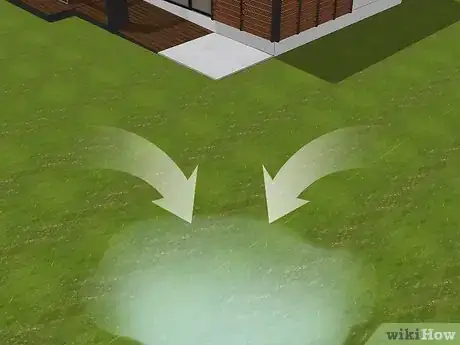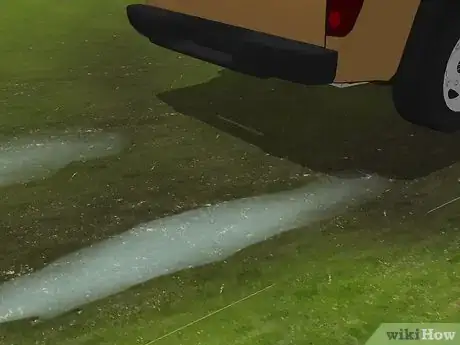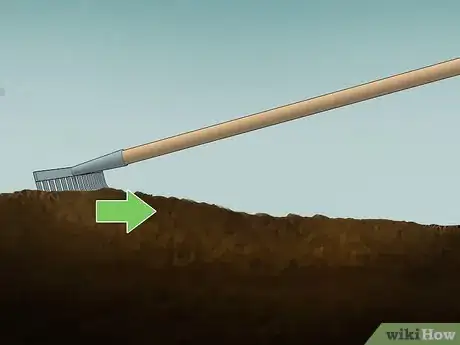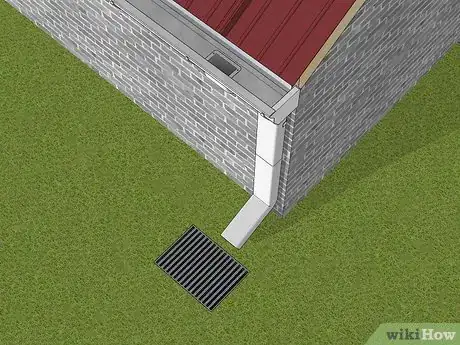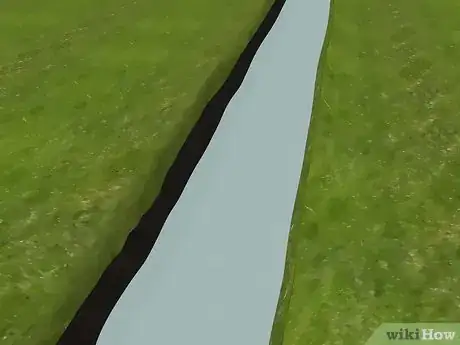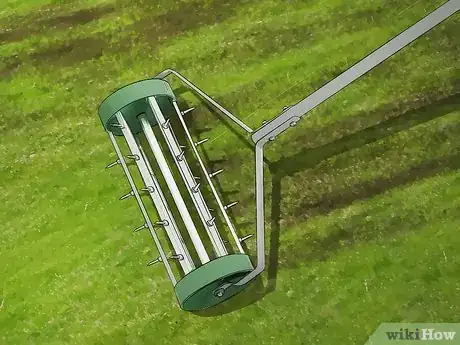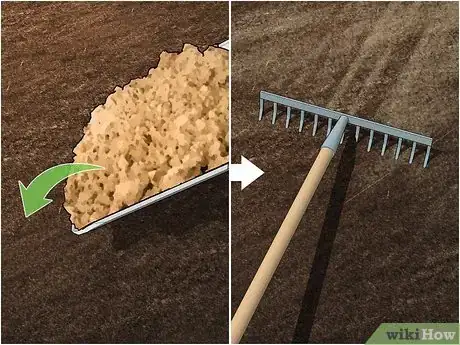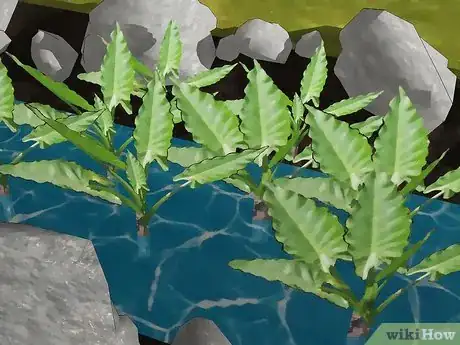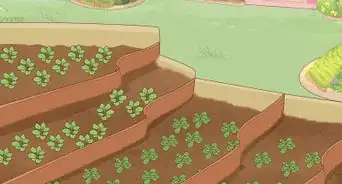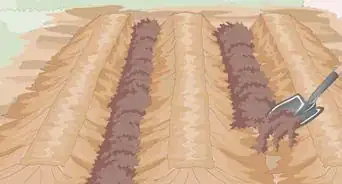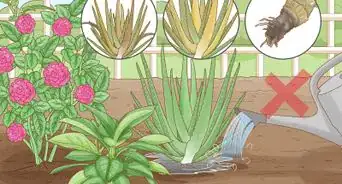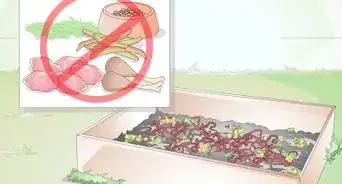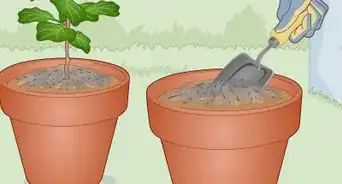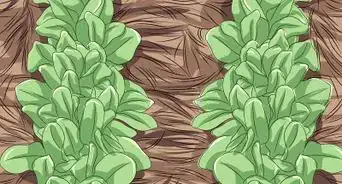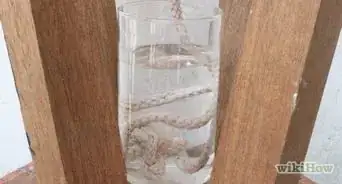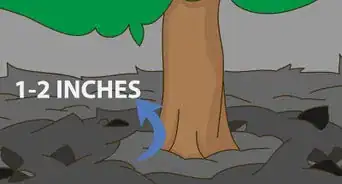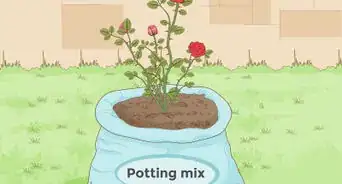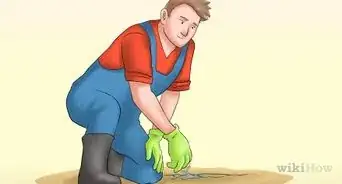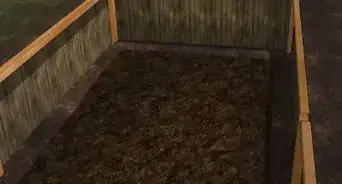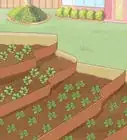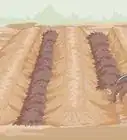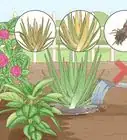This article was co-authored by Ben Barkan. Ben Barkan is a Garden and Landscape Designer and the Owner and Founder of HomeHarvest LLC, an edible landscapes and construction business based in Boston, Massachusetts. Ben has over 12 years of experience working with organic gardening and specializes in designing and building beautiful landscapes with custom construction and creative plant integration. He is a Certified Permaculture Designer, is licensed Construction Supervisor in Massachusetts, and is a Licensed Home Improvement Contractor. He holds an associates degree in Sustainable Agriculture from the University of Massachusetts Amherst.
There are 9 references cited in this article, which can be found at the bottom of the page.
This article has been viewed 263,030 times.
Standing water due to poor drainage in your lawn can lead to a number of problems, from mosquitoes to structural damage to your home. To deal with this, you first need to study your lawn to understand how and why water collects at that specific spot. Once you have a better idea as to why this is happening, you can address the problem accordingly by redirecting rainwater, treating the soil, adding vegetation, or a combination of all three.
Steps
Pinpointing the Problem
-
1Identify where water collects. Watch your yard during rainfall. Note exactly where water tends to pool and sit.[1] Also take into consideration how light or heavy the rainfall is, which may affect how large the affected area is. Plant stakes or flags in the center of the area and/or its borders while it's still wet if you think you will lose sight of it once it dries.[2]
- For example, say you have a spot roughly ten square meters that has standing water after a day of average rainfall.
- Then say that, after a heavy rainfall lasting three days or more, the area expands to twenty square meters.
- In this instance, the problem area is probably still the original ten square meters, since the surrounding area usually doesn’t experience standing water.
-
2Check where the water is coming from. First, see if additional water is being concentrated on this spot by a nearby structure, like the roof of your house or shed. Next, check if the water is runoff from an impervious surface, like a driveway or patio, that’s close at hand. Finally, check the lawn’s surface to see if the affected area is noticeably lower than the surrounding area.[3]
- Water goes wherever gravity takes it, so always work your way up from the affected area to find out how water is getting there.
Advertisement -
3Check the soil. Excessive water draining and pooling into a depression in the ground is certainly a problem, but keep in mind that it may not be the only one. Expect the soil itself to possibly prevent water from being absorbed. This may be caused by:[4]
- Compaction from weight placed on it, such as parking vehicles on the same patch of earth repeatedly.
- Thick root structures from vegetation that block the water’s absorption through the topsoil.
- Soil that is composed mostly of clay, rather than sand and/or organic matter.
- Really try to read the landscape as you check the soil. Do you see any signs of erosion, or have you noticed any low spots when you were watering recently?[5]
-
4Measure the grade of your lawn. Take a 3-foot (0.9 m) wooden stake and plant it a third of the way into the ground alongside your house. Do the same with a second stake 100 feet (30.5 m) away from the house, with the affected area in between. Then:[6]
- Tie a string around the first stake where it meets the ground. Then tie the other end to the second stake, using a level to determine how high up to make your knot, in order to keep the string perfectly horizontal.
- Go along the length of the string and measure its height off the ground to see how much it drops as you move away from the house.
- A level could also help with this.[7]
- Ideally, your lawn should drop off a couple of inches (5 cm) every ten feet (3 m) from your house. If the ground rises again as you move away from the house, this may be part of your drainage problem.
Redirecting Water
-
1Regrade your lawn. Water follows gravity, so if it’s collecting in a depression, raise the ground in that area. First, rake up the affected topsoil with a landscape rake so it mixes well with the soil to be added. Then collect soil from a higher site and use your rake to redistribute it over the low-lying area, tilling it well to mix it with the original soil. Fill the depression almost all the way, with about 2 inches (5 cm) to spare. Fill the last two inches by laying sod so its roots prevent the soil from washing away.[8]
- Remember to keep the slope of your lawn running downward from your house, not toward it.
- Your lawn’s slope should ideally lower by a couple inches (5 cm) every ten feet (3 m) from your house.
-
2Install gutters and drains. If the roof of your house or shed is adding water to a certain spot in your hard, redirect the water by installing water gutters and drains. Definitely do this if water is pooling directly alongside your house, since it may get into the foundation and create mold and cracks. Make sure you place your drains where the ground slopes away from your house so you don’t create a new problem while solving the old one.[9]
- Installing a rain barrel to collect water from your gutters is a great way to minimize the amount that your lawn has to absorb. It’s also a great no-waste practice, as the rainwater can be used to water plants.
-
3Create a drainage creek. Map out a creek bed that will carry water downhill from the affected area. Remove 12 to 15 inches (30 to 38 cm) of soil along this course. Compact the ground so the bed is flat and the sides are angled up and outward, away from the bed, so surrounding water flows in. Cover the bed and sides with landscape fabric to keep weeds and grass from growing. Then add a ½ inch (1.25 cm) layer of pea gravel over the bed.[10]
- Be mindful of neighbors when plotting your creek’s course. Diverting standing water might solve your drainage issues, but flooding their yard may create a whole new problem.
Treating the Soil and Adding Plants
-
1Aerate your lawn. If the root structure of your grass or other vegetation is so thick that it’s preventing the soil from absorbing the water, use a lawn aerator to break through the barrier. Punch holes through the ground with the aerator’s spikes or tines so the water can reach deeper sooner. Choose from a variety of models (from aerators you can wear under your shoes while walking to others that you push like a lawn mower) based on the size of your affected area.[11]
- All models are generally divided into two classifications: spike and core aerators. Core aerators are widely considered the most effective.
- Aerating your lawn will also attract more worm activity. Worms will create even more pathways for water to travel into and through the soil.
-
2Alter the soil’s composition. If a soil test reveals that your lawn is primarily clay, add new elements that will promote water absorption. Use a till or landscaping rake to loosen and remove at least 6 inches (15 cm) of topsoil from the affected area. After removing that, rake the bed of your hole again to loosen the underlying soil so it mixes well with the 6-inch (15-cm) layer of organic materials that you’re about to add. Then rake in a mix of compost, dead leaves, wood chips, tree bark, and horticultural sand.[12]
- The new organic material will be lighter and more permeable than clay.
- It will also promote plant life, which in turn will absorb more water through its roots.
- Worms will also be drawn to the richer soil, and the holes they create will increase drainage.
- Gypsum and limestone are also effective at breaking up clay for more permeability.
-
3Use vegetation to absorb water. Plant landscaping trees, shrubs, or plants that are particularly thirsty in or near the affected area. Note how much sun or shade it receives where your drainage problems occur. Choose local vegetation that will thrive in your specific yard. If your soil is mostly clay, be sure to choose plants well adapted to that soil.[13]
- Ideal plants for clay: (trees) birch, blue spruce, crabapple, douglas fir, eastern hemlock, eucalyptus, Japanese maple, juneberry, Norway spruce, western red cedar; (shrubs) barberry, butterfly bush, hydrangea, rose, viburnum; (plants) bigleaf periwinkle, common juniper, creeping juniper, creeping raspberry, elephant’s ears, geranium.
-
4Create a rain garden. If your soil isn’t clay, but you still experience poor drainage, go a step further and turn the affected area into a rain garden. Dig a hole in the center of that area. Make it deep and wide enough for all of the surrounding runoff or standing water to collect in. Create a planting mix that is 60% sand, 20% compost, and 20% topsoil to fill the hole. Select plants that are native to your area and thrive in water to plant in your new garden.[14]
- Keep your rain garden at least 10 feet (3 m) from the house and at least 50 feet (15.2 m) from a septic system. In the U.S., call 811 to make sure underground utilities aren't in the way.[15]
- Ideally, all the water in your rain garden should be absorbed within a day of rainfall. This is partly why creating a rain garden in clay soil isn’t a solution, since water has a tougher time draining through clay.
- A rain garden is a great endpoint for gutter drains and dry creek beds to get rid of runoff from roofs, driveways, and patios.
Expert Q&A
Did you know you can get expert answers for this article?
Unlock expert answers by supporting wikiHow
-
QuestionWhat should I do if I need to restore the soil after fixing the drainage?
 Jeremy YamaguchiJeremy Yamaguchi is a Lawn Care Specialist and the Founder/CEO of Lawn Love, a digital marketplace for lawn care and gardening services. Jeremy provides instant satellite quotes and can coordinate service from a smartphone or web browser. The company has raised funding from notable investors like Y Combinator, Joe Montana, Alexis Ohanian, Barbara Corcoran and others.
Jeremy YamaguchiJeremy Yamaguchi is a Lawn Care Specialist and the Founder/CEO of Lawn Love, a digital marketplace for lawn care and gardening services. Jeremy provides instant satellite quotes and can coordinate service from a smartphone or web browser. The company has raised funding from notable investors like Y Combinator, Joe Montana, Alexis Ohanian, Barbara Corcoran and others.
Lawn Care Specialist
-
QuestionHow do I fix waterlogged soil?
 Jeremy YamaguchiJeremy Yamaguchi is a Lawn Care Specialist and the Founder/CEO of Lawn Love, a digital marketplace for lawn care and gardening services. Jeremy provides instant satellite quotes and can coordinate service from a smartphone or web browser. The company has raised funding from notable investors like Y Combinator, Joe Montana, Alexis Ohanian, Barbara Corcoran and others.
Jeremy YamaguchiJeremy Yamaguchi is a Lawn Care Specialist and the Founder/CEO of Lawn Love, a digital marketplace for lawn care and gardening services. Jeremy provides instant satellite quotes and can coordinate service from a smartphone or web browser. The company has raised funding from notable investors like Y Combinator, Joe Montana, Alexis Ohanian, Barbara Corcoran and others.
Lawn Care Specialist
-
QuestionI get all the water runoff from a neighbor that lives above my property. It has created a gully down my property running across the driveway down toward the house. What should I do?
 Katie GohmannKatherine Gohmann is a Professional Gardener in Texas. She has been a home gardener and professional gardener since 2008.
Katie GohmannKatherine Gohmann is a Professional Gardener in Texas. She has been a home gardener and professional gardener since 2008.
Professional Gardener
Warnings
- Adding too much sawdust, bark, or other high-carbon organic matter to soil can create a deficiency in nitrogen. Use a nitrogen fertilizer or manure to rebalance the nitrogen and create faster decomposition of the organic matter.⧼thumbs_response⧽
References
- ↑ Ben Barkan. Garden & Landscape Designer. Expert Interview. 14 April 2020.
- ↑ http://www.bhg.com/gardening/landscaping-projects/landscape-basics/improve-poor-drainage/
- ↑ https://thesensiblegardener.com/lawn_drainage/
- ↑ https://thesensiblegardener.com/lawn_drainage/
- ↑ Ben Barkan. Garden & Landscape Designer. Expert Interview. 14 April 2020.
- ↑ http://www.dummies.com/home-garden/lawn-care/how-to-know-if-your-lawn-area-is-level/
- ↑ Ben Barkan. Garden & Landscape Designer. Expert Interview. 14 April 2020.
- ↑ http://yardcare.toro.com/create/planting-a-new-lawn/step-2-fix-grade-problems/
- ↑ https://thesensiblegardener.com/lawn_drainage/
- ↑ http://www.bhg.com/gardening/landscaping-projects/landscape-basics/how-to-create-a-dry-creek/
- ↑ https://thesensiblegardener.com/lawn_aerator/
- ↑ https://thesensiblegardener.com/lawn_drainage/
- ↑ https://thesensiblegardener.com/lawn_drainage/
- ↑ https://thesensiblegardener.com/rain_garden/
- ↑ https://www.thisoldhouse.com/how-to/how-to-build-rain-garden-to-filter-run
About This Article
To fix poor soil drainage, first measure the grade of your lawn to see if you need to regrade parts of it with a shovel and rake. You can also treat your yard by aerating it with a lawn aerator, which breaks up hard vegetation that prevents water from entering the soil evenly. If a soil test reveals your lawn is primarily clay, also rake in compost, dead leaves, and wood chips to make it more water absorbing. Then, consider planting some local trees or shrubs in the affected areas, which can soak up any remaining excess water. For more tips from our Horticulturist co-author, like how to create a rain garden, read on!


